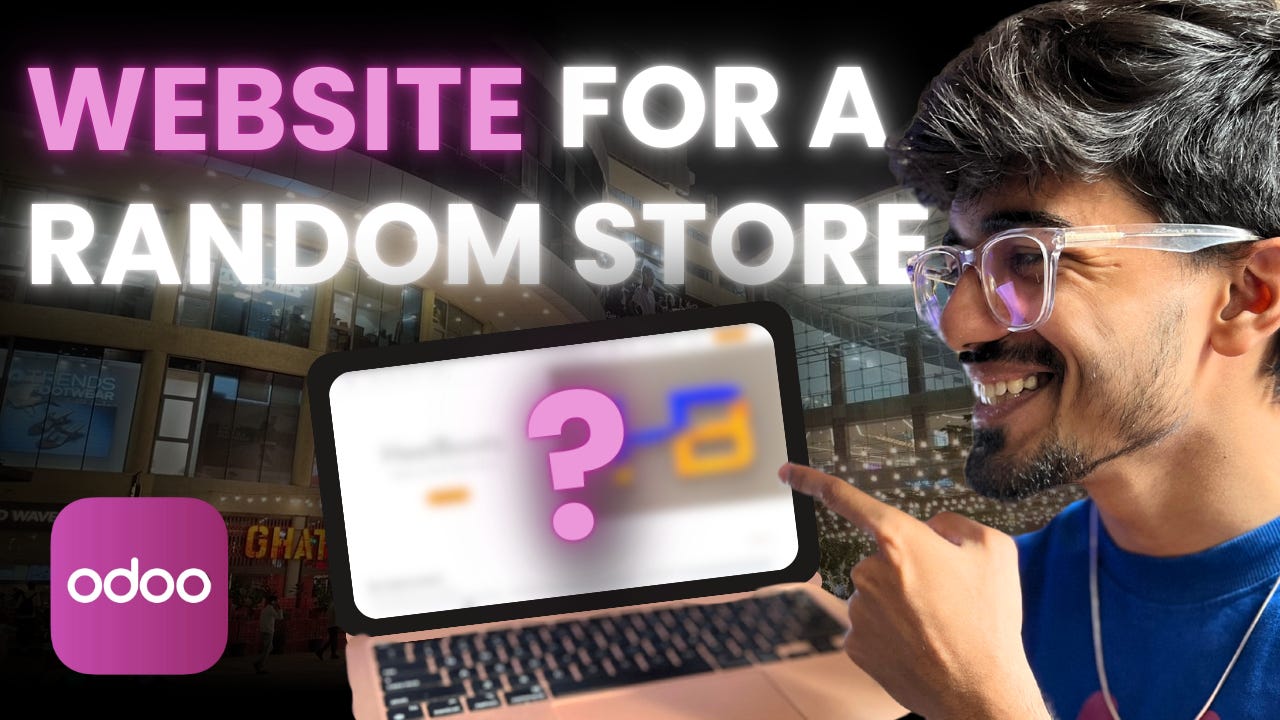How I Made a FREE Ecom Website for a Random Store?!
Building an Ecom Website for a Random Store?! 🚀 Odoo | Ali Solanki
Introduction
Creating an online presence is no longer a luxury but a necessity for businesses. When I visited a random store in a mall, I discovered an opportunity to revolutionize their business. Using my expertise in building ecommerce solutions, I took on the challenge to create a fully functional ecommerce website for the store — for free, in just one hour. The platform of choice? Odoo. Here’s how I achieved it step by step.
The Journey Begins: Meeting the Business Owner
During my visit to the store “Heel Boots,” I engaged with the owner, who was hesitant about venturing into ecommerce due to perceived complexity and costs. I assured him that a modern online store could be built quickly and at no expense, demonstrating the power of technology and creativity.
Step-by-Step Development Process
1. Choosing a Website Builder
I opted for Odoo, a comprehensive platform that offers a range of ecommerce tools. Odoo’s user-friendly interface and powerful features made it the perfect choice for creating a professional website efficiently.
2. Selecting Templates and Themes
Odoo provided a variety of customizable templates. I selected a visually appealing design that aligned with the brand identity of Heel Boots. The chosen theme highlighted their products elegantly while maintaining a clean and professional layout.
3. Adding Essential Pages and Features
Key pages such as “About Us,” “Privacy Policy,” and a dedicated “Shop” section were integrated into the website. I emphasized the importance of these pages in establishing trust and delivering a seamless user experience.
4. Populating the Store with Products
I uploaded high-quality images of the store’s products, such as men’s formal black shoes, alongside detailed descriptions and pricing information. Features like product variants (e.g., different colors and sizes) were also incorporated to enhance the shopping experience.
5. Setting Up Payment Options
To facilitate transactions, I activated Odoo’s payment gateway options, enabling secure and efficient payment processing. For simplicity, wire transfer was configured initially, with plans to add more options like Razorpay and Stripe later.
6. Adding Customizations
I customized the website’s text, animations, and visuals to reflect the brand’s unique identity. I even leveraged AI tools like ChatGPT to generate engaging subtitles and descriptions, adding a professional touch.
Challenges and Solutions
Despite time constraints, I overcame various challenges by:
Learning and leveraging new tools: Quickly mastering Odoo’s platform and design capabilities.
Optimizing for speed: Prioritizing essential features while leaving room for future enhancements.
Showcasing possibilities: Demonstrating how ecommerce can be approachable and effective for businesses of all sizes.
Conclusion
Within just one hour, I transformed Heel Boots’ offline store into a dynamic online platform ready to compete in the digital marketplace. This project not only showcased my skills but also highlighted the potential of modern tools like Odoo to empower businesses and bring their visions to life.





